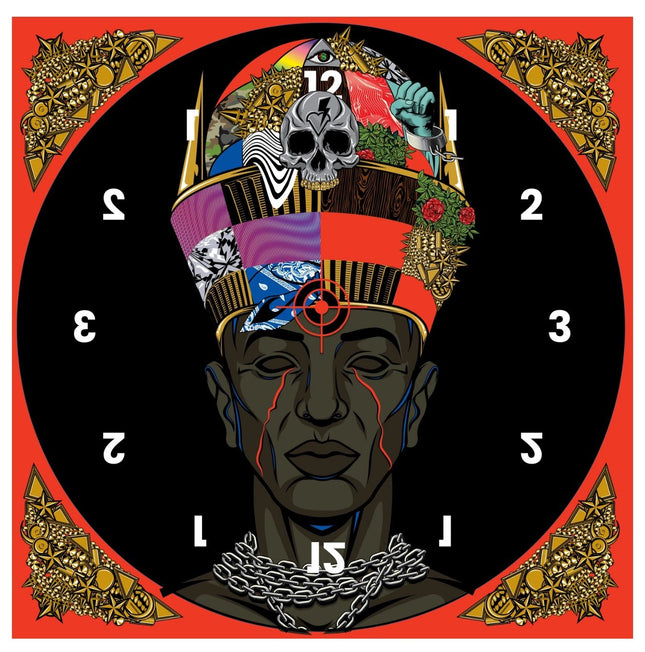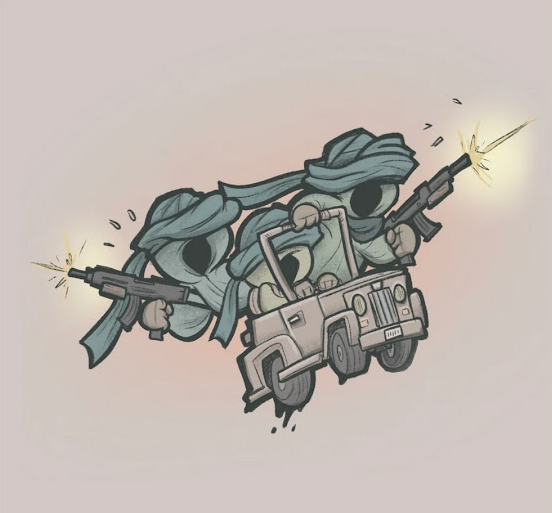
Middle East

Marwan Shahin Heavy is the Head AP Artist Proof Giclee Print by Marwan Shahin
Heavy is the Head Artwork Giclee Limited Edition Print on Etching Rag Paper by Pop Culture Graffiti Artist Marwan Shahin. Number 1 of 28 Signed 32x32 2019 From the new Modern-day Pharaohs series comes "Heavy is the Head" artwork made for and inspired by the poetry work of Rob J. Naylor's book with the same title releasing sooon. "HEAVY IS THE HEAD” 2019 Giclée on Etching Rag Each print is Signed, Numbered & Branded comes with a Certificate of Authenticity.
$946.00

Vandul Talivanduls Giclee Print by Vandul
Talivanduls Giclee Print by Vandul Artwork Limited Edition Print on Fine Art Paper Graffiti Pop Street Artist. 2023 Signed & Numbered Limited Edition of 50 Artwork Size 12x12 Fine Art Giclee. Vandul's "Talivanduls": A New Wave in Street Pop Art The "Talivanduls" Giclee Print is a vibrant embodiment of the spirit of Street Pop Art brought forth by the enigmatic and innovative artist Vandul. This 2023 signed and numbered limited edition of 50 showcases Vandul's aptitude for fusing street culture's gritty ethos with pop art's vibrant energy. Sized at a precise 12x12 inches, each fine art giclee print is a snapshot of the artist's creative prowess. Vandul, an artist who maintains anonymity, has become an influential name in the Graffiti Pop Street Artist scene, hailing from the United States. With its explosive motion and iconic imagery, this piece encapsulates the movement and chaos often associated with street art and the fast-paced world it reflects. Vandul's work is a complex narrative, employing character and symbol to comment on broader societal themes, manifesting in a form that is accessible yet deeply thought-provoking. Technique and Symbolism in "Talivanduls" The production method for "Talivanduls" aligns with the high standards expected in fine art circles. Giclee printing, known for its high-quality archival ink and color durability, brings the artwork to life with unparalleled depth and richness. This method, combined with the use of fine art paper, ensures that each piece is a visual spectacle and a lasting piece of art. Vandul's choice of this medium reiterates the bridge between street art's temporary nature and the permanence sought in fine art. The artwork is a symphony of contradictions – the whimsical and the militant, the playful and the serious. Characters enshrouded in oversized garments, wielding weapons while zooming in a toy-like vehicle, suggest a parody of conflict and power. This imagery prompts viewers to reflect on the dichotomies of play and warfare, innocence and aggression, perhaps as a commentary on the blurred lines between the two in contemporary culture. Impact of Vandul's Work on Contemporary Art Vandul's impact on the landscape of contemporary art is marked by his ability to translate the raw energy of the streets into pieces that resonate with a diverse audience. "Talivanduls" is a prime example of this translation, offering a narrative that is both localized in its street art origins and universal in its appeal. The limited edition nature of the print underscores the exclusivity and collective appreciation for this unique art form. As an artist, Vandul navigates the fine line between anonymity and fame, allowing his work to speak volumes while his identity remains in mystery. This approach lends his work an air of intrigue and helps maintain the focus on the art itself rather than the artist. "Talivanduls," like much of Vandul's work, thus becomes a canvas for public interpretation and dialogue, a defining characteristic of both Street Pop Art and Graffiti Artwork. In a cultural era where the distinction between high art and street art continues to blur, Vandul's "Talivanduls" emerges as a significant piece that encapsulates this transition and propels it forward. Through this work, Vandul asserts the relevance and potency of street-inspired art into the broader art discourse, offering a compelling visual feast that is both a testament to his artistry and a challenge to the art establishment.
$147.00



